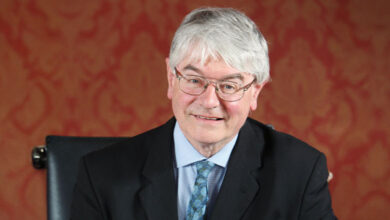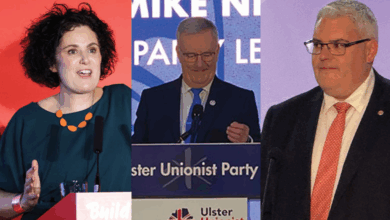Engaging stakeholders: Robbie Smyth
Robbie Smyth suggests some of the best communication strategies for stakeholder management. Honesty, persuasion, and asking searching questions about your work are important elements in getting the right results.
Whether you want to sell chocolate or politics, to build a nuclear power station or a wind farm, you need to be able to persuade and convince the opinions of those who matter to your policy or project that it is the right thing to do, especially if the roll-out is going to take some time. For a trouble-free passage you need buy-in from project conception to completion.
Communication skills are more important now in a world where citizens have many competing and conflicting sources of information, distractions and burdens on their time. If you want to convince someone that your project, policy or product is the right one, you have a small window of attention to promote your message.
There is no ‘new’ communication magic elixir that can turn around your communications campaign. There are, though, literally centuries of sound methods that can create effective communication strategies for the media specialist, or more importantly for the project managers, engineers, administrators, politicians, lobbyists and interest groups who often find themselves in the front lines of hostile communication encounters.
The short version is: Be truthful when you communicate, listen vigilantly, and evaluate every step you take through to the smallest of details repeatedly asking why you are taking a particular step or action, and think about reading some Aristotle.
In this century we often call this communication process ‘engaging stakeholders’. In ancient Greece it was the process of how the polity dealt and acted on issues of the day. Post-World War II there was the question of how government related to vested interests, lobby and pressure groups. The 19th century was the age of the parallel tracks of the voter and shareholder followed quickly by the period of union-employer confrontations.
But now we talk of ‘stakeholders’, a theory first proposed by R E Freeman in 1984. Freeman describes stakeholders as “who or what really counts”. We could expand this to include: those who profit from your activities; those who don’t; those who are funding, commissioning or contributing to your project; and perhaps most importantly those who are key to your project’s successful completion.
Key questions
If you are managing a project that necessitates communicating with stakeholders a first step would be to ask the Freeman question of ‘who or what really counts?’
The next step would be ask: ‘why are you really involved in this communication process?’ Maybe you believe such a strategy will reduce costs, increase revenue or make your project proceed smoothly. Or, it could be that you feel it is expected of you and you have to go through the motions whether they are legal, political or administrative. Many of us fall into the latter category and are in danger of sleepwalking through stakeholder consultation storing up unnecessary future risks.
So here is your first task in truthfulness. Be honest and decide where you really are on this stakeholder spectrum.
Next, return to the identification process of who are your stakeholders. Rank them, by deciding how important you think they are. Then do it again thinking about how important they think they are! Are you ranking by a power or money criteria? Are you looking at whether these stakeholders are project enablers or blockers. Both evaluation methods are valid and worthwhile.
Cost is a vital issue throughout any communication campaign and you must think in detail on the question of how much of your budget you will invest in a communication process.
Often campaign spend is confused with success but it is never a given. Hilary Clinton outspent Barack Obama in the run-up to the early primaries and still lost. Tesco spend significant sums advertising low prices, £50 million in 2006, but still cannot halt the small but constant negative publicity about the firm’s activities and a growing cynical and distrustful public perception of the company.
Evaluating the impact of your spend is vital and lower cost options can be just as effective a billboard campaign or commissioning TV spots.
Logistics
The logistics of stakeholder engagement are important mainly because some communicators see the process as merely a campaign of lobbying, promoting and instructing but don’t realise they have to listen too.
So look carefully at all your logistical communication options. Are you planning an advertising campaign, public meetings, surveys, questionnaires, a website, leaflet drops, personalised letters or even door-to-door public contact?
All are examples of the nuts and bolts of communication strategies, but ask ‘why are you taking any of these steps?’ A way of asking the ‘why’ question would be to ponder are you promoting a positive outcome or a negative one, maybe justifying all steps taken or are you trying to persuade a reluctant stakeholder community?
Have you really thought your message through? Will it be clear and easily understood by your audience? If you need to persuade people, how will you do it?
One simple option is to adopt the Jack Welsh method, when as CEO of General Electric he promoted a strategy of “Tell me the truth and tell me early” and “Be candid with everyone”.
Another route is that of US academic Harold Lasswell who in the 1930s defined communication as “who says what, to whom, in what channel and with what effect”.
Lasswell’s theory is more important today as the channels of communication have widened considerably with the impact of TV, the internet and mobile phone technology, many of which offer lower cost options to implement targeted communication messages.
One example of this is the Cadbury’s TV advertising campaign, the latest edition of which was launched in January. The ‘Jivebrow’ ads where two children dance with their eyebrows was created by Fallon Advertising. It ran for just two weeks on broadcast TV before migrating to the internet with an audience of millions and linked into Cadbury websites, even generating income for Cadbury through YouTube viewing.
What is now forgotten is that the campaign which began with a drum- playing gorilla originated as a strategy to deflect attention from a massive recall of Cadbury’s bars in 2006.
Persuasion
Key to all of these communication strategies is the concept of persuasion. It is not a new idea and was written about most cogently by Aristotle who identified the principles of:
• logos, how logical is your argument;
• ethos, how credible you are as a persuader;
• pathos, can you engage and arouse sympathy in your audience.
Barack Obama is an Aristotelian persuader while Brian Cowen and Gordon Brown have failed recently in all three areas.
Persuaders can also be things. The Dublin Luas project, contentious and troubled in roll-out, has become a shining example of the infrastructural possibilities for the city while the wind farm construction mudslides in Kerry in 2008 and Mayo 2003 seriously set back the case in rural Ireland for a more rapid roll-out of renewable energy projects. So think widely on who your persuaders and advocates can be.
Finally be ready to consider current sociological and psychological research into societal behaviour. Social research is often the key to unlocking a better understanding of societal attitudes and opinion.
Take two recent examples. First, from the US Center for Research on Environmental Decisions, which found that the public have a pool of “finite worry” and prioritise their concerns. Climate change was ranked the 20th priority of US citizens in Pew Research conducted in January, making it harder to mobilise public action on this issue.
Perhaps more key to successful stakeholder engagement is the idea of ‘working memory’ and work by Syracuse University professors who in 2007 concluded that “no mater how clever or practised we are we still only remember four things from a communicative encounter”.
So what do you remember from your last stakeholder experience and what will you remember from this article?





